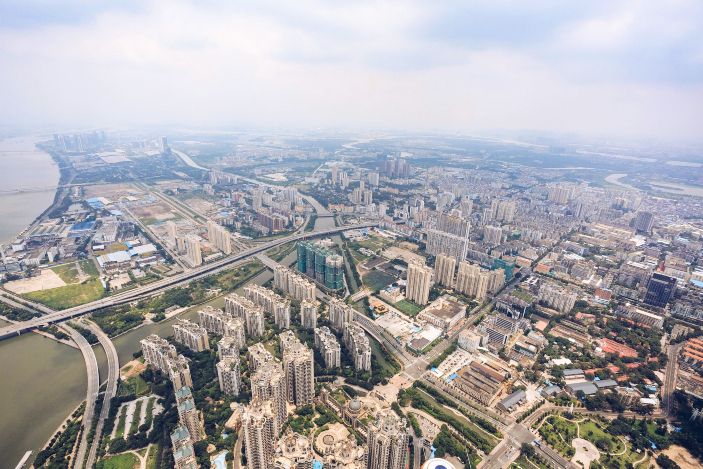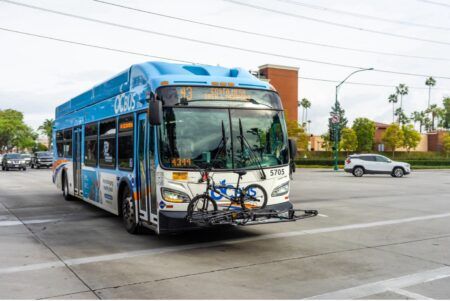A new generation of multipurpose autonomous minibuses are being rolled out in the Guangzhou Huangpu District of China. Baidu’s Apolong II is equipped with advanced autonomous driving capabilities and the latest in-vehicle smart cabin technologies to enhance passenger experience.
The Apolong II can comprehensively meet diversified market demands by providing customizable multipurpose autonomous vehicle solutions for public transport, mobile policing, healthcare providers and other commercial industry scenarios, marking a milestone in the ongoing evolution of smart transportation for this intelligent era.
The Apolong II minibus effectively mirrors the powerful autonomous driving capabilities of Baidu’s Apollo Robotaxi, by incorporating the latest self-developed autonomous driving computing unit and sensor system. Compared to its predecessor, the Apolong II has numerous upgrades comprising 155 capability enhancements that enable Apolong II to operate on open roads. The computing power of Apolong II has increased three times to 372 Tops. Its sensor system is enhanced to include two 40-channel LiDAR sensors, which integrate millimeter-wave radars and surround view cameras. The refined sensor system can now detect up to 250m, while positioning accuracy and overall responsivity have reached new levels. The Apolong II can successfully navigate the complexities of operating on open roads, such as unprotected left turns, lane-switching and crossing traffic scenarios.
The diverse adaptability and extensive applications of the Apolong II multipurpose autonomous minibus enable it to connect a wide range of traffic scenarios and revolutionize the smart transportation industry. Its ability to complement other autonomous vehicles or traditional public transport can greatly reduce the walking distance of users, providing a refreshing new take towards solving the last mile problem for citizens. Apolong II can be repurposed for a magnitude of real-world scenarios by being utilized as public transportation modes, ride-hailing services, scenic tours and more.

The Apolong II uses Baidu’s vehicle-to-everything (V2X) and 5G remote driving service, complete with dual redundancy to ensure safety and reliability. With seamless vehicle-road coordination, issues related to smart driving for individual vehicles can be reduced by 54%, while emergency braking situations at intersections are reduced by 90%. The 5G cloud-based driving can also enable the autonomous minibus to drive safely and smoothly even under extreme circumstances.
Aside from its refined autonomous driving capabilities, the Apolong II also boasts cutting-edge smart cabin solutions. For starters, an intelligent 55in transparent window display jointly developed by Baidu and BOE Technology has been installed to visually showcase the road conditions and autonomous driving technologies at work. Apolong II passengers can also use this HD screen to voice-activate and command its in-vehicle DuerOS assistant, having access to navigation features to explore the surrounding area for dining or entertainment recommendations. Its spacious smart cabin is designed with a circular seating arrangement and decked out with dome lighting fixtures to provide an innovative yet intimate experience for users.
As the first commercial-grade autonomous electric minibus launched in China, the Apolong series has been in volume production since July 2018. Having already been deployed in 22 urban parks in Beijing, Guangzhou, Xiong’an, Chongqing, Foshan and more – the first-generation Apolong is the only self-driving minibus to achieve large-scale operations in China, accumulating over 120,000 users and a total mileage of 120,000km.
The Guangzhou Huangpu District is revered as a benchmark city for new smart transportation infrastructure and stands at the forefront of innovative autonomous driving technology. Going forward, the Apolong II will fulfil multipurpose commercialized applications and provide citizens with the ultimate smart transportation experiences by being deployed in public parks, airports, business districts and residential communities in the Huangpu District of Guangzhou.





